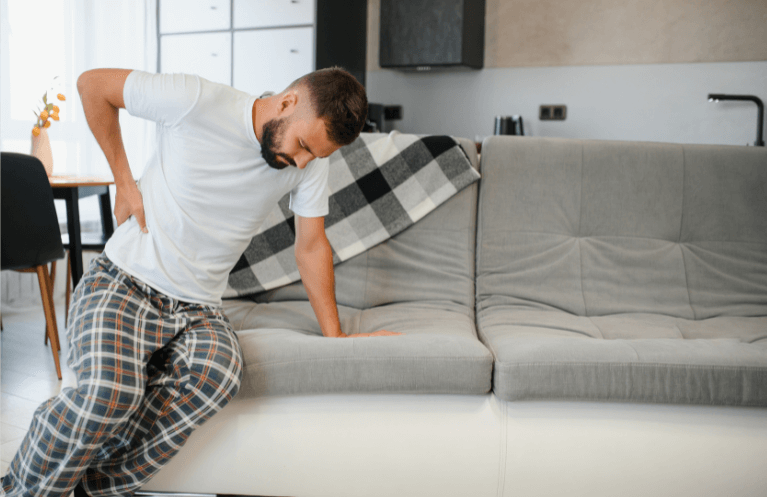The relationship between core strength and balance is something that has been widely discussed within the physical therapy field for several years. Your trunk contains multiple core muscles that work to prevent physically limiting conditions, such injuries, lower back pain, or balance and gait disorders. When your core is strong, it helps keep you upright and decreases your risk of falling.
How are core and balance related?
There are three systems in your body that help to control your balance: The visual system, the vestibular system, and the proprioceptive system.
The visual system refers to the messages that your brain and eyes send to each other, in order to help you see. Your eyes send signals to your brain about your position in relation to the world around you.
The vestibular system refers to the liquid in your inner ear that functions as a sort of “carpenter’s balance,” in order to keep you level. If you’ve ever felt dizzy, it generally means that the liquid in the vestibular system is a little bit off-balance.
The proprioceptive system is the one that involves your core. Proprioception nerves are sensory nerves that situate throughout the body. They make you aware of your posture and aware of spatial things around you.
In order to stay balanced, one must have equilibrium in all three systems. A weak core is one element that can make you feel off-balance and cause you to fall down.
The impact of core muscles on stability:
When many people think of core muscles, they immediately picture the abs – but there are so much more! In fact, there are two separate groups of core muscles: the inner core and the outer core.
The inner core muscles are attached to your spine and they help to stabilize your core. The outer core muscles work in conjunction with the inner core muscles whenever you need to move your body from point A to point B – or, essentially to do most physical activities.
When we think of “core stability,” we are thinking of the inner core muscles. When we think of “core strength,” we are thinking of the outer core muscles. Engaging in physical therapy will help you to train both your inner and outer core muscles, in order to achieve better balance and movement.
PT treatments for core building and improved balance:
Core strength can be improved upon without pricy gym equipment. Many physical therapists will recommend a simple and quick exercise known as the “drawing in maneuver.”
To accomplish this exercise, begin by standing up straight with your hips in line with the rest of your body. Suck in your stomach, as if you were drawing your belly button in toward your spine. Then, walk around with your belly button still drawn in.
Ideally, your core muscles should be strong enough to hold that position for at least 30 seconds. However, if you are out of shape, you may have to build up to this time. This should be a painless exercise, so if you notice any pain while performing it, make sure you stop immediately. Once your core begins to build more muscle, your physical therapist will move you on to more difficult exercises, such as yoga, planks, or bridges.
Try these three exercises we’ve put together for you to add to your daily routine. Try doing them once a day for two weeks and let us know how you feel.
If you have been struggling with your balance, we can help. Contact us today to learn how our core strengthening services can improve your balance and get you back on your feet!
We offer a variety of ways to assist you in achieving your optimal well-being! If you’re uncertain about the steps to take or the professionals to consult to improve your balance, stability, and reach a state of confidence and strength, we’re here to help.
Take advantage of our FREE Discovery Visit. Hurry, as our schedule has limited openings. Reach out to us at 508-223-2300 or simply click here to complete our Free Discovery Visit form.
Other Resources:
Click Here To Learn More About Balance & Fall Prevention
Click Here To Learn More About Vertigo and Dizziness
Watch our Video “Breathing Is Everything” on Houghton PT’s YouTube Channel
Sources:
https://www.health.harvard.edu/balance-and-mobility/improve-your-balance-by-strengthening-your-core
https://www.webmd.com/fitness-exercise/features/balance-your-way-to-stronger-body



